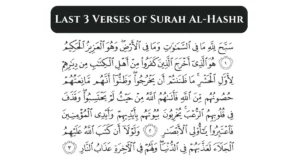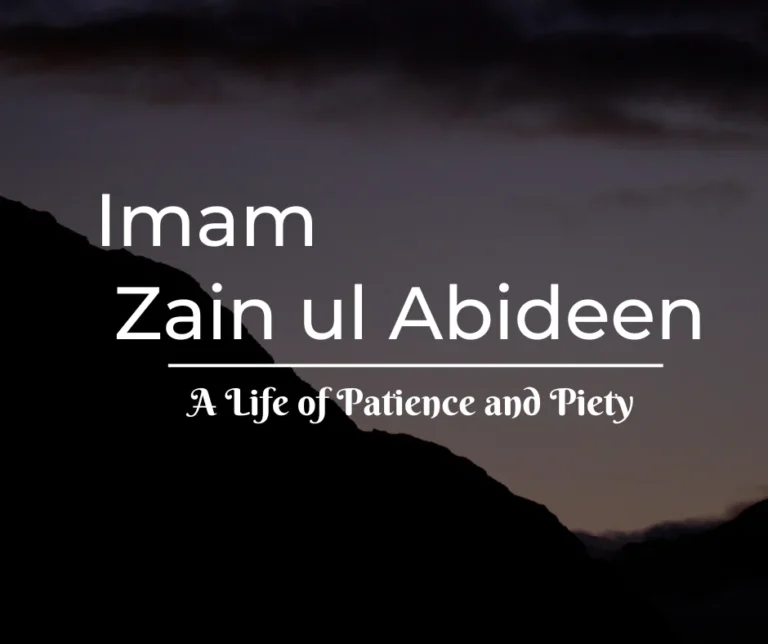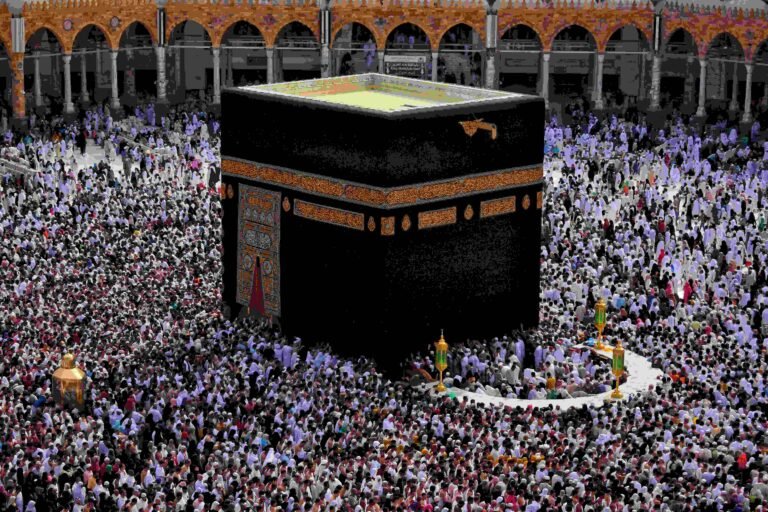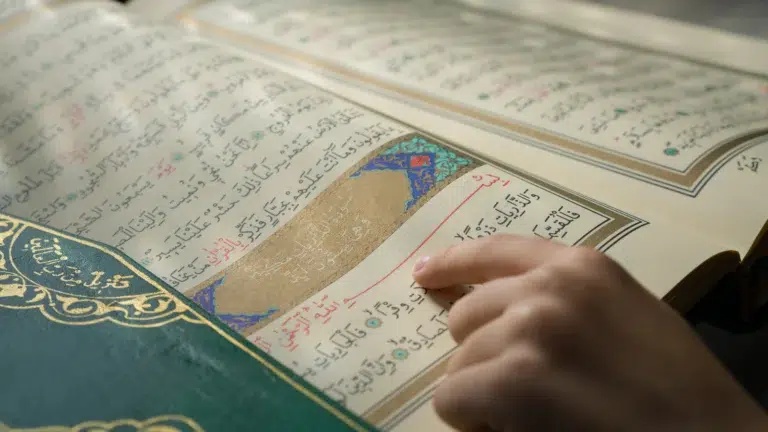Introduction
Masjid al-Haram, also known as the Holy Mosque, is significant to Muslims. It is not just a building; it is considered the beating heart of our faith, located in the heart of Mecca, Saudi Arabia. The Quran itself acknowledges its paramount importance in Surah Al-Baqarah.

The annual Hajj pilgrimage, one of the Five Pillars of Islam, gathers millions of Muslims at Masjid al-Haram to perform rituals that date back to Hazrat Ibrahim (Abraham) (AS). Similarly, the Umrah pilgrimage attracts worshippers throughout the year, offering them spiritual reflection and renewal opportunities.
If you’re looking for a complete guide on Hajj or Umrah, don’t worry! Our inclusive Hajj and Umrah category is here to help you on your pilgrimage journey. You can learn about the rich history of this sacred journey and step-by-step instructions for each ritual. Dive into our Hajj and Umrah category now!
Historical Overview of Masjid al-Haram
Islamic traditions state that angels initially built Masjid Al-Haram even before the creation of humanity. The purpose of the mosque was to reflect Al-Baytul Ma’mur (the House of Heaven). Floods and storms damaged the structure of Masjid Al-Haram. As a result, Allah (SWT) commanded Hazrat Ibrahim (AS) to reconstruct the Holy Kaaba along with his son Hazrat Ismail (AS).
One of the earliest expansions of Masjid al-Haram occurred during the time of Prophet Muhammad (SAW) and the early caliphs. Authorities undertook this expansion to increase the mosque’s capacity due to the growing Muslim community.
Caliph Hazrat Omar Ibn al-Khattab (634-644) rebuilt Masjid Al-Haram during his reign. The mosque has undergone several renovations and expansions since then. The current structure dates back to 1571 AD, during the rule of Ottoman Sultan Selim II.
In the early 1950s, King Abdul Aziz Saud planned to expand the mosque to increase its capacity, which King Fahad later carried out. King Salman further renovated the structure, expanding the northern section and enclosed areas with air conditioners.
Notable Structures within Masjid al-Haram
Masjid al-Haram is the largest mosque in the world. It is home to several notable structures of significant religious and cultural importance.
Kaaba
The Kaaba is the central structure and focal point of Masjid al-Haram. According to Islamic belief, Allah (SWT) ordered Hazrat Ibrahim (AS) and Hazrat Isma’il (AS) to build the Kaaba, considered the holiest site in Islam. A black cloth covers the cuboid-shaped structure of the Kaaba, and gold-embroidered calligraphy decorates it.
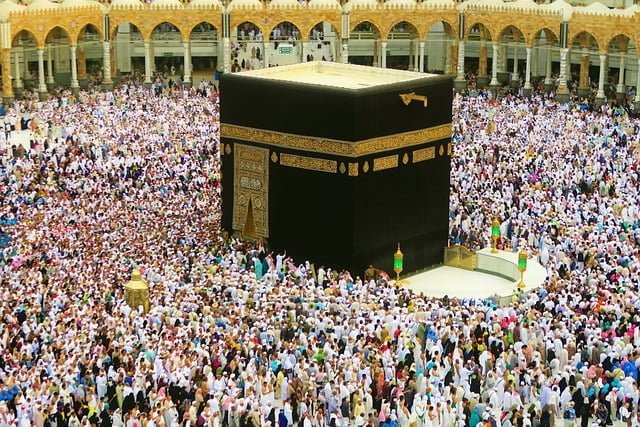
The Kaaba is the focal point for prayer and pilgrimage in Islam, representing unity and devotion. For more information, visit our blog about The Kaaba.
Mataaf
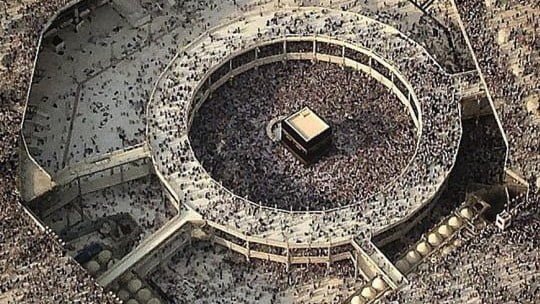
The Mataaf is the area that surrounds the Kaaba, where the Tawaf is performed. Initially, this area was quite small, but it needed to be expanded as the number of pilgrims increased. To make room for the pilgrims, the area around the Kaaba was expanded, and three floors were constructed in Masjid al-Haram to facilitate the Tawaf process.
Maqam Ibrahim
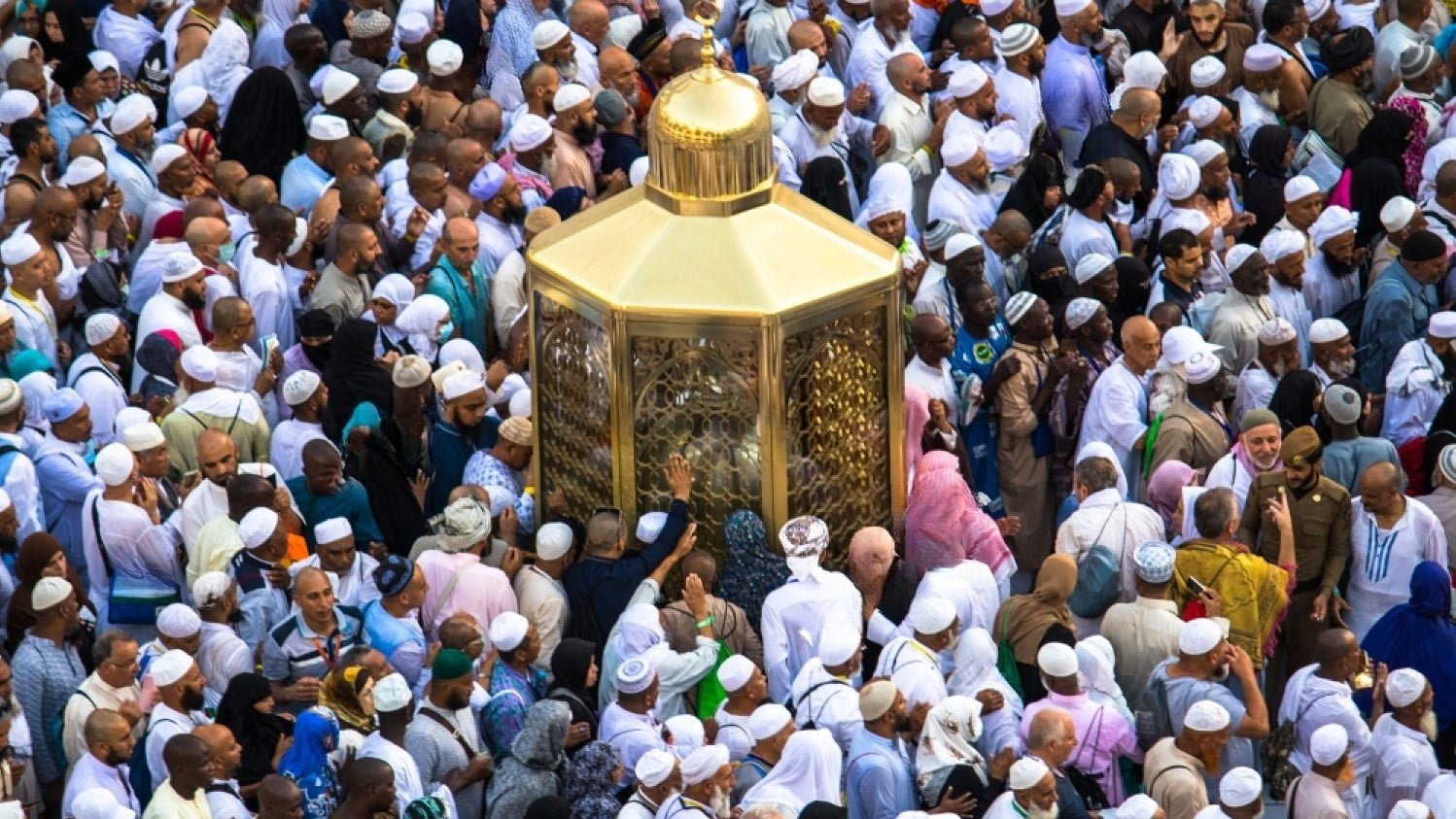
The Maqam Ibrahim is a significant location located 46 feet away from the Kaaba, just a few meters from its southeastern corner. During the construction of the Kaaba by Hazrat Ibrahim (AS) and Hazrat Ismail (AS), they faced difficulty with the high walls. Allah (SWT) provided them with a unique stone that would rise when Hazrat Ibrahim (AS) leaned on it and lower when he needed to come down, making the construction process more accessible. This stone is known as Maqam Ibrahim and holds the prints of Hazrat Ibrahim’s (AS) feet.
ZamZam Well
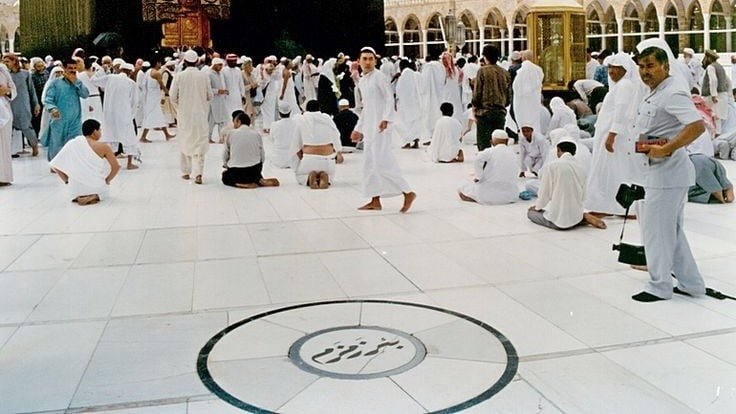
The ZamZam Well was located near the Kaaba within the Masjid al-Haram in the early days. It holds significant historical and religious importance in Islamic tradition, as it is believed to have been miraculously provided by Allah (SWT) for Hazrat Hajar (AS) and her son Hazrat Ismail (AS) when they were left in the desolate desert.
Over time, As the Masjid al-Haram expanded and the surrounding infrastructure developed, the ZamZam Well also underwent changes and improvements. However, the well remains within the area of the Kaaba, its physical structure, and accessibility to the pilgrims.
Zamzam water is highly valued in Islamic traditions, symbolizing physical and spiritual nourishment. To learn more about its significance, visit our blog on this sacred resource.
Hills of Safa and Marwah
Safa and Marwa are two hills essential to Masjid Haram and linked to the mountains, Abu Qubays and Qaiqan. Safa is located near the Kaaba, about 130 meters southeast, at the base of the Abu Qubais Mountain. Marwa is roughly 300 meters northeast of the Kaaba and connected to the Qaiqan Mountain.
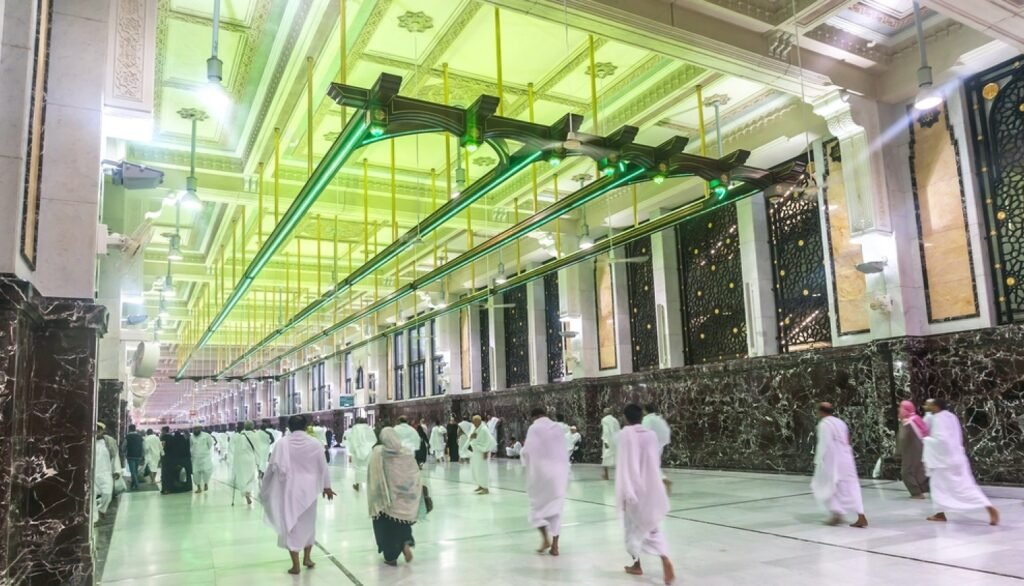
The Sa’i ritual involves walking seven times back and forth on Safa and Marwa. In modern times, pilgrims start their Sa’i near the hill of Safa, marked by a green light. They end near the hill of Marwah, also designated by a green light in Masjid al-Haram.
Sa’i symbolizes faith and unity and reflects Hazrat Hajra’s (AS) quest and trust in Allah (SWT). For further insights into the Sa’i pillar of Hajj and Umrah, visit our blog.
Mas’a Gallery
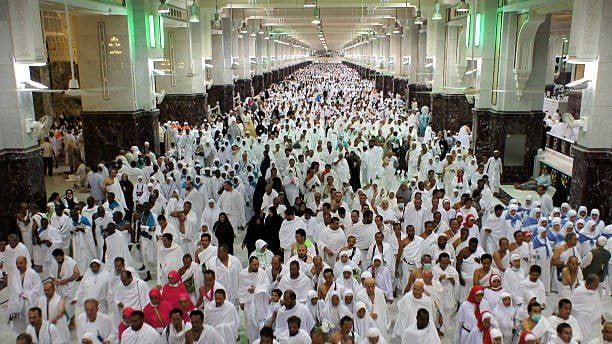
The Mas’a Gallery is a covered pathway within the Masjid al-Haram, strategically connecting the hills of Safa and Marwah. It is situated on the northern side of the mosque, between the Safa and Marwah areas. The gallery is a convenient route for pilgrims performing the Sa’i.
Gates of Masjid al-Haram
The Masjid al-Haram mosque is a massive structure that can take in millions of worshippers. Consequently, there are many gates for entry and exit. However, some gates are important because of their historical significance, accessibility, and capacity to take in many pilgrims. Here are some of the most crucial entry points to Masjid al-Haram:
King Abdul Aziz Gate: Located in the southwestern corner of the mosque, it is known as the Yemeni corner.
King Fahd Gate: Halfway between the Shami and Yemeni corners, it is a significant entry point to the mosque.
Umrah Gate: This entrance is for the Syrian corner of Masjid al-Haram, providing easy access for worshippers, especially during Umrah rituals.
King Abdullah Gate (NEW): It corresponds to the spout (mizab) of the Ka’ba, indicating its proximity to the sacred structure at the mosque’s center.
Fath Gate: On the northeastern side of the mosque, an entry point corresponds to the Iraqi corner.
As-Salam Gate: Corresponds to the area for Sa’i between the hills of Safa and Marwa.
These gates serve as entry points to the Masjid al-Haram and symbolize various historical events and figures significant to Islam.
Daily Life and Rituals in Masjid al-Haram
The daily life and religious practices observed in the mosque revolve around prayer times and practices. As Muslims, we must perform the Five Daily Prayers at specific times throughout the day.
It was narrated from Hazrat Jabir (RA) that the Messenger of Allah (SAW) said:
“One prayer in my mosque is better than one thousand prayers elsewhere, except the Sacred Mosque, and one prayer in the Sacred Mosque is better than one hundred thousand prayers elsewhere.”
[Sunan Ibn Majah 1406]
When we gather for Congregational Prayers, the Imam leads us from a designated area called the “mimbar” or pulpit. In Masjid al-Haram, you’ll usually find the Imam standing near the Kaaba, facing towards it, during these prayers.
Specific rules must be followed when entering a mosque. Women who are Menstruating cannot enter the mosque as they are considered to be in a state of impurity during this time. Similarly, Non-Muslims are not allowed to enter the mosque as it is considered to be a religious space reserved only for Islamic worship.
Modern Features and Amenities
If you plan to visit Masjid al-Haram for Umrah or Hajj. The holy site has now been equipped with modern amenities and features to make your pilgrimage more comfortable and hassle-free. Let’s take a closer look at some of these facilities.
Masjid al-Haram Clock Tower
This iconic landmark structure is a valuable tool for pilgrims. The clock tower is equipped with state-of-the-art technology that assists visitors in keeping track of prayer times and other important events. Furthermore, the tower has a loudspeaker system that broadcasts the Adhan (call to prayer) five times daily.
Hotels near Masjid al-Haram
The area surrounding Masjid al-Haram has a variety of hotels and guesthouses that fulfill the needs of the pilgrims. These accommodations are available in different price ranges, from budget-friendly options to luxurious five-star hotels. You can choose the one that fits your preferences and budget. Most hotels are within walking distance of the mosque, so you won’t need to worry about transportation or traffic. Furthermore, these hotels offer modern amenities such as Wi-Fi, air conditioning, and room service to ensure your stay is as comfortable as possible.
Respect and Etiquette in Masjid al-Haram
Visitors to the mosque must maintain the highest levels of respect and proper etiquette. The mosque holds immense significance for Muslims across the globe, and it is crucial to acknowledge its sanctity and strictly adhere to the guidelines that promote a peaceful and respectful atmosphere.
Visitors to the mosque must maintain the highest levels of respect and proper etiquette. It is essential to acknowledge the mosque’s holiness, which holds massive significance for Muslims across the globe. To promote a peaceful and respectful atmosphere, it is crucial to adhere to the guidelines strictly.
Dos and Don’ts
To create a respectful environment, Pilgrims must follow the guidelines.
Appropriate Clothing
Individuals must dress appropriately to maintain modesty and show respect. Men should wear clean and modest clothing that covers their shoulders and knees, and women should wear loose-fitting clothing that covers their entire body, including their hair.
Behavioral Guidelines
Pilgrims are expected to observe certain behavioral guidelines while performing rituals. They should maintain silence and avoid rushing or pushing others, especially during Tawaf and Sa’i. Visitors must also avoid engaging in any activities that may disturb fellow pilgrims, such as speaking loudly. Such guidelines are necessary to ensure a peaceful and uninterrupted worship experience.
Prohibitions
Certain items are strictly prohibited within Masjid al-Haram precincts for the safety and comfort of all pilgrims.
- Authorities prohibit all types of food and drinks except for coffee, dates, and water, which they allow.
- All sorts of sharp objects.
- Authorities strictly forbid any liquid that catches fire, such as petrol.
- As a safety measure in crowded areas, authorities do not allow travel bags, suitcases, and large carry bags.
- Strollers are not allowed inside the Mataaf area.
It is important to keep in mind that there are specific actions that are not permissible in Masjid al-Haram. For instance, smoking is strictly forbidden in areas not designated for smoking and is not allowed within the boundaries of the Masjid Haram. Furthermore, pilgrims should refrain from taking photographs within Masjid al-Haram as it can disrupt the focus of worship and weaken the holiness of the pilgrimage experience.
Challenges and Developments
Masjid al-Haram, the center of Islamic worship since the early days of Islam, has undergone numerous changes in its development and management over time. Authorities have made several significant developments to tackle various challenges and improve pilgrims’ experience.
An increasing number of Pilgrims
Masjid al-Haram has faced challenges in accommodating the increasing number of pilgrims. To address this issue, the mosque has undergone extensive expansions. The additions of multi-level prayer halls, outdoor courtyards, and expanded Mataaf areas have significantly increased the mosque’s capacity to accommodate the growing number of pilgrims.
Language Barriers
Pilgrims from different regions and backgrounds spoke different languages, which posed communication challenges within Masjid al-Haram. Modern developments in communication technology, such as translation services and multilingual signage, help address language barriers within Masjid al-Haram.
Proper air Condition
In the early days, Masjid al-Haram lacked modern amenities such as air conditioning. Authorities have installed state-of-the-art air conditioning systems to comfort worshippers regardless of the outside temperature.
Focus on Cleanliness
Maintaining cleanliness within Masjid al-Haram for pilgrims presented challenges due to limited resources and infrastructure. Modern facilities management practices and sanitation protocols ensure that it always remains clean and hygienic.
Washroom Facilities
Significant developments have been made in providing washroom facilities within Masjid al-Haram. Modern, well-equipped restrooms are now available throughout the mosque complex, ensuring pilgrims can access clean and functional facilities during their visit.
Conclusion
Masjid al-Haram is a sacred place for Muslims worldwide, and its significance dates back centuries. The mosque has undergone various renovations and expansions, with several notable structures that hold religious and cultural importance. The annual Hajj pilgrimage and Umrah attract millions of Muslims annually, allowing them to connect with their faith and reflect on their spirituality.
As Muslims, we must learn about the history, structure, and significance of Masjid al-Haram. We hope this article has provided useful insights into this holy place and its importance in Islam. Check out our blog and other resources for more information on Hajj, Umrah, and other Islamic topics.





